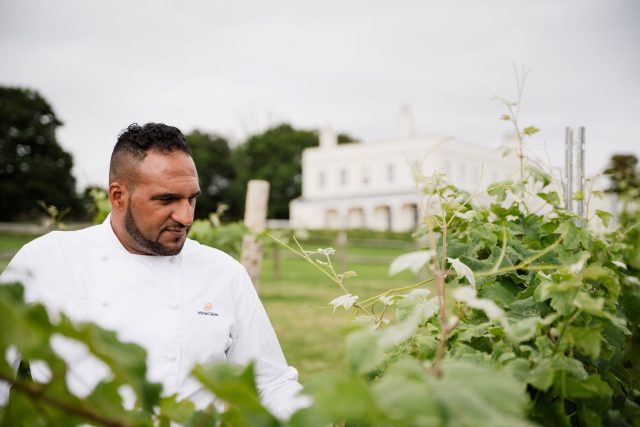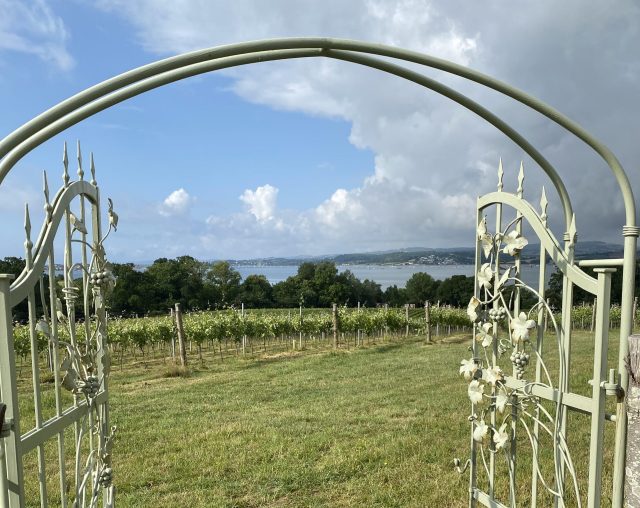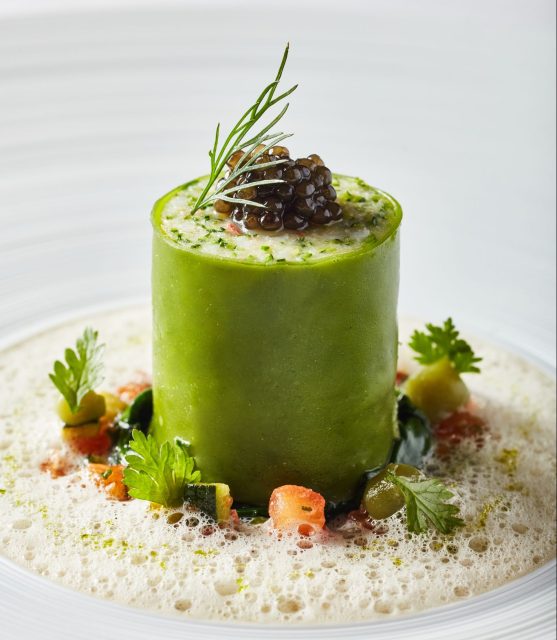This website uses cookies so that we can provide you with the best user experience possible. Cookie information is stored in your browser and performs functions such as recognising you when you return to our website and helping our team to understand which sections of the website you find most interesting and useful.
Wine List Confidential: Lympstone Manor
Michael Caines MBE’s Grade II-listed “luxury country-house for the 21st Century” was appraised as “romantic hotel of the year” by The Times, possessing “outrageous” views of “rolling Devon hills and the broad Exe estuary” according to Tim Hayward of the FT.

Once owned by the Baring banking family, Courtlands House as previously known, was acquired by the Exeter-born Caines in 2014. Formerly head chef of Gidleigh Park, Caines had been seeking his own country house hotel having long been inspired by the iconic Le Manoir aux Quat’ Saisons, Oxfordshire where he worked aged 19 under Raymond Blanc OBE. The site which later became The Pig – at Combe was a strong contender was it not for the tight leasehold. Upon observing Courtlands House for the first time, even as a frayed conference and events centre, obscured by palm trees and with a fire escape tumbling off the principal elevation, Caines, who is the Deputy Lieutenant for the County of Devon, found himself “lost for words” which is something he admits “doesn’t happen often.”
Vineyard

Despite not having planning permission for its enlargement and rehabilitation, Caines placed an offer on the property the day it went to market, which “was accepted by midday” he recalls. While standing on the then shallower terrace, Caines was struck by the expanse of southwest-facing grazing land, fallow for at least 250 years, deciding, “instinctively”, to transform it into a vineyard. James Lambert, MD of Lyme Bay, being Lympstone Manor’s winery partner, was at first cynical as to the site’s potential for quality wine production – until he saw the grapes come in. Despite the spectre of Covid, the first meaningful harvest, following planting in May 2018 of some 17,500 vines led to the new French oak matured, single clone, Triassic Pinot Noir 2020 scooping Gold at the International Wine Challenge.
The next release, scheduled for October’s harvest festival, will be the agile Classic Cuvée, also built from the fully ripe fruit of 2020, being Pinots, Noir and Meunier, with oak and batonage shown Chardonnay. At three grams per litre, the dosage was decided by a panel including this writer, and the former UK and Ireland delegate for Relais & Châteaux (Caines currently holds that title). Other styles will follow, given this single vineyard is being put to work to earn its keep.
“The vine likes to see the water”, says Caines as we walk amid the flowering vines planted in now well-drained, visibly red sandstone, with the microclimate feeling incrementally warmer as one gets closer to the collection of family-friendly double shepherds huts which are named after woodland creatures. Other bedrooms in the main house feature the names of birds of the estuary, including the double aspect “Oyster Catcher”. All are equipped with a complimentary tray of Plymouth gin and Luscombe Devon tonic, although plans are afoot to make an estate gin using the vineyard’s spent skins.
Drinks

Head sommelier, Sylwia Oger, previously of Gidleigh Park, describes the 600-bin restaurant wine list, including premium by the glass dispensed by “Wine Emotion” machines visible from the main corridor, as “beautiful and well-crafted with plenty of hidden gems.” A collaborative effort between Oger, Caines, and operations director and third-generation Australian, Steve Edwards, who has worked with Caines “through thick and thin” for three decades, the selection ranges from first-growth Bordeaux to a decade-old Bordeaux blend from Ningxia (Kanaan Pretty Pony) via a sparkling half of Austrian rosé (Brundlmayer), orange Radikon (Slatnik), Georgian Saperavi (Bedoma) and Canadian Pinot Noir (Bachelder Wismer-Parke). Prices are generally sane, including the magnum of 1998 Rare Champagne and 2004 Penfolds Grange. There is also a substantial focus on English wines.
Dishes
Served across three dining rooms named after views, Berry Head, Mamhead and Powderham, to be supplemented in time with an orangery, dishes are realised by head chef, Jordan Denning, who has worked with Caines for 12 years. To mark English Wine Week, our menu was exclusively paired with homegrown wines. After a strikingly good honey bun inspired by Caines’ visits to the local bakery at Saulieu when he worked for Bernard Loiseau (Le Relais Bernard Loiseau), these included Stopham’s 2021 Pinot Gris from West Sussex which, despite the meagre conditions of the year, felt well developed with passion fruit notes matching the lemongrass scents of a skillfully slender cannelloni of langoustine with Oscietra. Swanaford Estate’s defining, lavender-scented, oak-bevelled, silken Kingfisher Bacchus 2022, from a ten-year-old, ten-acre site on the eastern fringe of Dartmoor, proved an even better match, lusciously curling around a crescent of duck liver ballotine with lightly candied hazelnuts, lightly pickled daikon and gutsy black truffle mayonnaise tartlet served on a hand brushed blue plate.

The late Roy Martin was toasted next with a glass of the Meursault-scented, single vineyard Lyme Bay Martin’s Lane Chardonnay 2022. According to John Mobbs of Great British Wine, Martin was an early champion of Essex’s River Crouch, which continues to gain serious acclaim for the brightness of fruit, as shown in this muscular wine, born from whole bunches fermented and matured in brand-new 400-litre barrels, which has ageing potential. This was poured with anise-roasted, crisp-skinned Cornish sea bass bouillabaisse with saffron braised onion, olive tapenade and tender vegetables.
From the vineyard in our midst, Lympstone Manor Triassic Pinot Noir 2020, being impressively dark, rich and savoury, arising from the German 1801 clone, was a fine match with half a handsome pigeon pithivier with Madeira jus and yet more truffle. It was a much brighter, more layered experience than the sluggish, Kentish 2018 The Red Miller (Balfour), which, as the name suggests, is a pure Pinot Meunier, served with albeit excellent roasted quail with asparagus, mushrooms, and faultless pea purée.
Finally, and perhaps being one of the more enjoyable wines discovered from this Hampshire winery, Hattingley Valley’s Entice 2020, made from Bacchus grapes kept artificially frozen at minus 10 degrees Celsius for a fortnight, was a perky, refreshing match with gold-flecked, peach-shaped pudding with vanilla mousse, thyme gel “leaf”, and nectarine sorbet.
Last Word
The food and wine encounter at Lympstone Manor has been seriously enhanced by the presence of the vineyard, which fits so harmoniously into the setting. Despite its attractiveness, this is no mere marketing moment or personal folly given a day spent with Caines reveals his deep interest and knowledge in wine’s craft, appreciation and application to dining.
Best For
- Cellar Room
- The pool house development
- The vineyard
- Sculptures throughout the estate
Value: 93, Size: 94, Range: 95, Originality: 97, Experience: 96, Total: 95
Lympstone Manor – Courtlands Lane, Exmouth, EX8 3NZ; 01395 200920; tables@lympstonemanor.co.uk; lympstonemanor.co.uk

